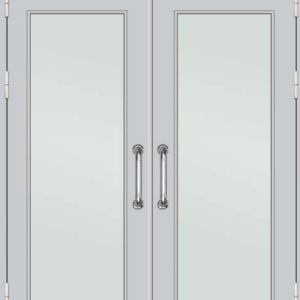Technical Requirements for Fireproof Glass Door
1. Fire Resistance Level
Fireproof glass door must comply with national fire protection standards. The appropriate level of fire resistance should be selected based on the specific usage environment. Common fire resistance levels include Class A (highest), Class B, and Class C.

2. Fire Resistance Duration
These doors must maintain integrity for a specified duration during a fire, preventing flames from penetrating. The required duration varies depending on the fire resistance level and application.
3. Glass Quality
The glass used in fire-resistant doors must meet relevant quality standards, offering high fire resistance, impact resistance, and transparency. Specifications, thickness, and processing methods should align with design requirements.
4. Structural Strength
Fire-resistant glass doors must possess adequate structural strength to withstand pressure and impact, ensuring stability and safety. This strength should meet national standards.
5. Sealing Performance
Effective sealing is crucial to prevent the spread of flames and smoke. The sealing materials must exhibit excellent fire resistance and aging resistance for long-term effectiveness.
6. Fireproof Materials
Materials used in fire-resistant glass doors must conform to national standards, demonstrating high fire resistance and stability. Common fireproof materials include fire-resistant boards and coatings.
7. Fireproof Accessories
Accessories such as fire locks and fire hinges must meet fire protection requirements. These components should provide reliable fire resistance and stability to enhance the overall performance of the door.
8. Installation Process
The installation process significantly impacts the door’s performance and lifespan. Installation should strictly follow design specifications to ensure accurate positioning, security, and optimal sealing and ventilation.
Fireproof glass

